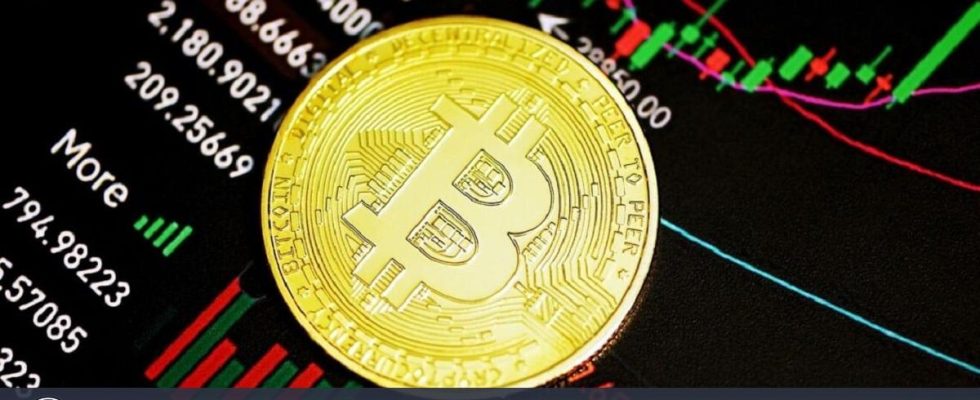bitcoin And cryptocurrency A recent tweet by Blofin Academy, an online education and analytics platform, revealed a risky trend among cryptocurrency options sellers.
According to the tweet, many options sellers are trying to collectively sell deep out-of-the-money (OTM) options to capture cash flow and hedge the costs of holding large amounts of positive gamma for OTM and at-the-money (ATM) strikes. started.
In a moment we will tell you what these terms mean and explanations of the analysis.
Block traders trading large volume options have even collectively sold quarterly and monthly deep OTM options under 10 deltas.
Behavior of Cryptocurrency Options Traders Indicates Volatility According to Blofin Academy
The tweet warns that this trend could be one of the risk factors for more volatility in the cryptocurrency market. When the current price resistance is broken, the negative gamma on the hands of market makers and options sellers will increase, which could trigger a buy or sell wave of large-scale hedging.
As implied volatility in crypto markets continues to be at historically low levels, many options sellers have begun selling deep OTM options in bulk to capture cash flow and hedge their costs of holding large amounts of positive gamma around OTM and ATM strikes. Among them, block… pic.twitter.com/hZUBfx66cq
— Blofin Academy (@Blofin_Academy) May 8, 2023
To understand what this means, we need to explain some basic concepts of cryptocurrency options trading.
Options are contracts that give the buyer the right, but no obligation, to buy or sell an underlying asset at a specified price (strike) before or on a specified date (expiry date). The seller of the option receives a fee from the buyer for assuming this obligation.
Options can be classified as in-the-money (ITM), at-the-money (ATM) or out-of-the-money (OTM) depending on the relationship between the strike price and the current market price of the underlying asset. ITM options have intrinsic value, meaning they can be used to make a profit.
ATM options have no intrinsic value, but they have the highest time value, meaning they are affected by factors such as volatility and expiration. OTM options have no intrinsic value and have low time value, meaning they are unlikely to be exercised and expire worthless.
To put it simply, imagine purchasing a coupon that entitles you to purchase one Apple stock for $150.
The coupon expires at the end of the month. Now, let’s assume the current market price of an Apple stock is $170. This means your coupon is in-the-money (ITM), because you can use your coupon to buy Apple stock for less than the market price and make a $20 profit. Your coupon has intrinsic value, meaning it has value.
Now, let’s assume the current market price of this Apple stock is $150. This means your coupon is at-the-money (ATM), because you can use your coupon to buy an Apple stock for the same price as the market price. Your coupon has no intrinsic value, meaning it has no value on its own. But it still has some time value, meaning Apple stock can have value if the market price changes before its expiration date.
Now, let’s assume the current market price of this Apple stock is $130. This means your coupon is out-of-the-money (OTM) because you will now be able to buy Apple stock for a higher-than-market price and lose $20. Your coupon has no intrinsic value and has very low time value, meaning it’s almost worthless. Unless the market price of Apple stock rises significantly, it is unlikely that you will redeem your coupon before it expires.
Gamma is a measure of how much an option’s delta changes as the price of the underlying asset changes. Delta is a measure of how much the price of an option changes as the price of the underlying asset changes. A positive gamma means that an option’s delta increases as the price of the underlying asset increases, and vice versa. A negative gamma means that the delta of the option decreases as the price of the underlying asset increases, and vice versa.
Options traders benefit from positive gamma because it reduces their exposure to price movements of the underlying asset. Option buyers, on the other hand, benefit from negative gamma as it increases their exposure to price movements of the underlying asset.
By selling deep OTM options, options traders predict that the price of the underlying asset will not rise significantly above the strike price before expiration. They collect a small premium for assuming this risk, but also expose themselves to a large potential loss should the price move against them. This is especially true for cryptocurrencies, which are known for their high volatility and unpredictability.
If the price of the underlying asset exceeds the resistance level and goes beyond the strike price of deep OTM options, options sellers will face a negative gamma situation, i.e. their delta will decrease as the price increases. This will force them to buy more of the underlying asset to maintain their position, which will push the price even higher and create a feedback loop.
This is known as gamma squeeze and can cause extreme market volatility and large price fluctuations.
The tweet by Blofin Academy indicates that this scenario could happen soon in the cryptocurrency market as many options sellers are selling large volumes of deep OTM options. This could create the perfect environment for gamma compression should the current price resistance be broken by a bullish catalyst or a spike in demand.
Therefore, cryptocurrency traders and users should be aware of this risk factor and closely monitor the market for any signs of volatility. They must also use appropriate risk management strategies and tools to protect their positions and profits.
*Not investment advice.
For exclusive news, analytics and on-chain data Telegram our group, twitter our account and YouTube Follow our channel now! Moreover Android And iOS Start live price tracking right now by downloading our apps!
